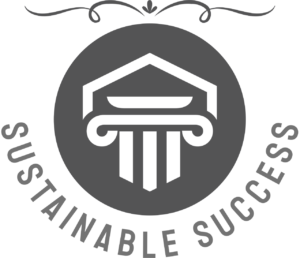What Is Sales Performance Improvement and Why It Matters
Sales performance improvement is the strategic process of enhancing a sales team’s effectiveness, efficiency, and results through deliberate actions and data-driven decisions. For organizations that rely on consistent sales growth, improving performance isn’t optional—it’s critical. When sales performance lags, so does revenue, customer satisfaction, and market competitiveness. Boosting performance can lead to more closed deals, shorter sales cycles, and stronger customer relationships. This improvement process involves more than just pushing sales quotas; it focuses on refining behavior, systems, tools, and strategy. High-performing sales teams don’t happen by accident—they are built through intentional development. Companies that actively invest in performance optimization gain a measurable edge over competitors who don’t.
Identifying Key Areas for Sales Performance Optimization
Pinpointing where sales efforts are underperforming is the first step toward improvement. Start by analyzing sales data and comparing it with industry benchmarks to highlight gaps and strengths. This includes evaluating close rates, lead-to-opportunity conversion, and deal velocity. Sales performance improvement hinges on understanding not just what isn’t working, but why. Is it a matter of lead quality, lack of training, inefficient workflows, or outdated processes? You’ll also want to examine your team’s approach to qualifying prospects, handling objections, and following up. Mapping out the entire customer journey reveals where leads are dropping off or being mishandled. Optimization begins by identifying areas of friction or inconsistency that cost the business time and money.
Building a High-Performance Sales Culture
A high-performing team starts with a culture that values excellence, accountability, and growth. Culture isn’t a buzzword—it’s a critical driver of long-term success. Sales leaders need to model the values they want their teams to embody: commitment, collaboration, and customer focus. When sales professionals feel ownership over their results, motivation naturally increases. Encourage peer-to-peer recognition and transparent communication across the team. Sales performance improvement is often stifled by siloed information and unclear expectations. A positive, high-performing environment is one where goals are aligned, feedback is welcomed, and wins are celebrated. Leaders who foster this type of environment often see their teams hit and exceed targets more consistently.
Training and Development: Equipping Reps to Succeed
Ongoing training is a non-negotiable when it comes to sales performance improvement. Reps must be empowered with the right knowledge, skills, and tools to confidently handle buyer objections and close deals. Static onboarding or one-time workshops are no longer enough in fast-changing sales environments. High-impact training programs are continuous, personalized, and tied to real-world selling situations. Coaching should be integrated into day-to-day activities through call reviews, role-plays, and real-time feedback. Focus areas might include discovery questioning, objection handling, and effective follow-up strategies. Training should evolve alongside your market, keeping reps sharp, agile, and competitive. With proper development, even average performers can become top contributors.
Leveraging Technology to Enhance Sales Performance
Technology is a powerful ally in the quest to improve sales performance. CRM platforms streamline lead tracking, automate administrative tasks, and provide deep visibility into sales pipelines. Sales automation tools free up time for reps to focus on what matters most—building relationships and closing deals. Data dashboards allow managers to monitor KPIs in real time, identifying trends and acting swiftly to adjust tactics. AI-powered sales tools can also predict customer behavior and suggest next-best actions based on patterns. These enhancements help reps prioritize their efforts and personalize outreach more effectively. The key is integrating tools that actually support performance rather than overwhelm teams. With the right tech stack, even small teams can scale efficiently and compete with larger players.
Setting Smart Goals and Tracking Progress
Goal setting isn’t just about quotas—it’s about aligning team activities with business outcomes. Effective sales performance improvement begins with setting clear, specific, and achievable goals. These targets should reflect not only revenue but also activities like call volume, email follow-ups, and new qualified leads. Smart goals serve as a compass for daily action and long-term growth. Performance tracking should be frequent and transparent, using dashboards and scorecards that make progress visible to all stakeholders. Regular one-on-ones and check-ins keep goals relevant and reps accountable. Reaching new heights requires consistent measurement, feedback, and encouragement. When teams understand how their efforts tie into larger goals, motivation and performance both rise.
Refining the Sales Process for Better Outcomes
Improving sales performance often means taking a hard look at the existing process and eliminating inefficiencies. A well-defined, optimized sales process provides structure while still allowing for flexibility based on buyer needs. Start by mapping each stage of your funnel—from lead generation to closing—and examining where delays or drop-offs occur. Are reps spending too much time on unqualified leads? Are follow-up cadences too slow or inconsistent? Streamlining the process might involve redefining qualification criteria, adjusting outreach timing, or introducing new nurture sequences. When the process flows smoothly, reps can move prospects through the funnel with greater ease and consistency. A refined process helps shorten the sales cycle, improve win rates, and ultimately increase revenue.
Incentives, Recognition, and Retention Strategies
Incentivizing performance isn’t just about offering bigger commissions—it’s about aligning rewards with desired behaviors. Performance-based incentives should be clearly tied to both individual and team goals. This could include bonuses for achieving conversion benchmarks, consistent follow-ups, or customer satisfaction scores. Public recognition also goes a long way in boosting morale and encouraging healthy competition. Retaining top performers means giving them a reason to stay beyond money—career growth, mentorship, and a strong company culture. Sales performance improvement thrives in environments where people feel valued and supported. Don’t overlook the impact of simple, genuine appreciation for hard work and results. A well-rounded incentive system creates a performance-driven culture that’s built to last.
Common Pitfalls to Avoid in Sales Performance Efforts
Many teams make the mistake of chasing results without addressing the root issues that affect performance. Relying on quick fixes, such as new scripts or aggressive quotas, rarely delivers lasting change. Another common pitfall is ignoring the importance of ongoing coaching and development. Training shouldn’t stop after onboarding—it must be part of the sales DNA. Additionally, some leaders overlook feedback from the reps who are actually on the front lines. These insights are critical for refining messaging, improving processes, and boosting morale. Overloading reps with too many tools or metrics can also lead to burnout and confusion. Avoid the temptation to overcomplicate. Focus on strategies that are sustainable, scalable, and human-centered.
Real-World Applications: Turning Strategy Into Results
Effective sales performance improvement happens when strategy meets action. It’s not enough to have a vision—teams need structure, support, and accountability. Regular performance reviews, data analysis, and collaborative planning keep everyone aligned. When teams start applying what they’ve learned through coaching and training, transformation follows. Leaders must remain present, adaptable, and proactive in guiding the team forward. It’s also important to revisit and revise your approach regularly based on performance trends and market feedback. Sales teams that commit to continuous improvement create a culture of winning—where excellence becomes the standard and not the exception. The momentum gained from small wins eventually leads to exponential growth.
Frequently Asked Questions (FAQ)
Q1: How long does it take to see improvement in sales performance?
Most teams begin to see noticeable improvements within 30 to 90 days when applying consistent strategies and tracking metrics.
Q2: What are the most effective tools for measuring sales performance?
CRMs like Salesforce or HubSpot, performance dashboards, call tracking software, and revenue attribution tools are essential for accurate measurement.
Q3: Should small businesses focus on sales performance improvement, or is it only for larger teams?
Sales performance improvement is valuable for businesses of all sizes. Small teams often see even faster returns due to their agility.
Q4: What’s the difference between sales training and performance coaching?
Training focuses on skill-building, while coaching emphasizes real-time application, feedback, and mindset development.
Q5: Can performance improvement strategies help remote sales teams too?
Absolutely. With virtual tools and structured check-ins, remote teams can benefit from the same techniques—often with greater flexibility.

